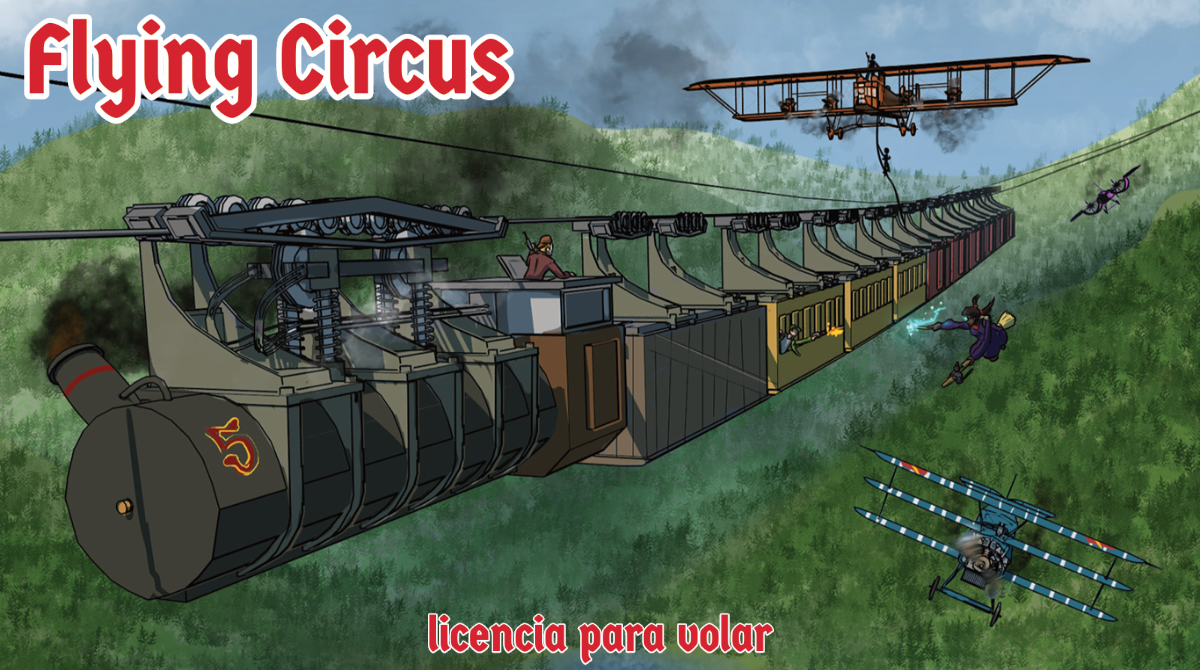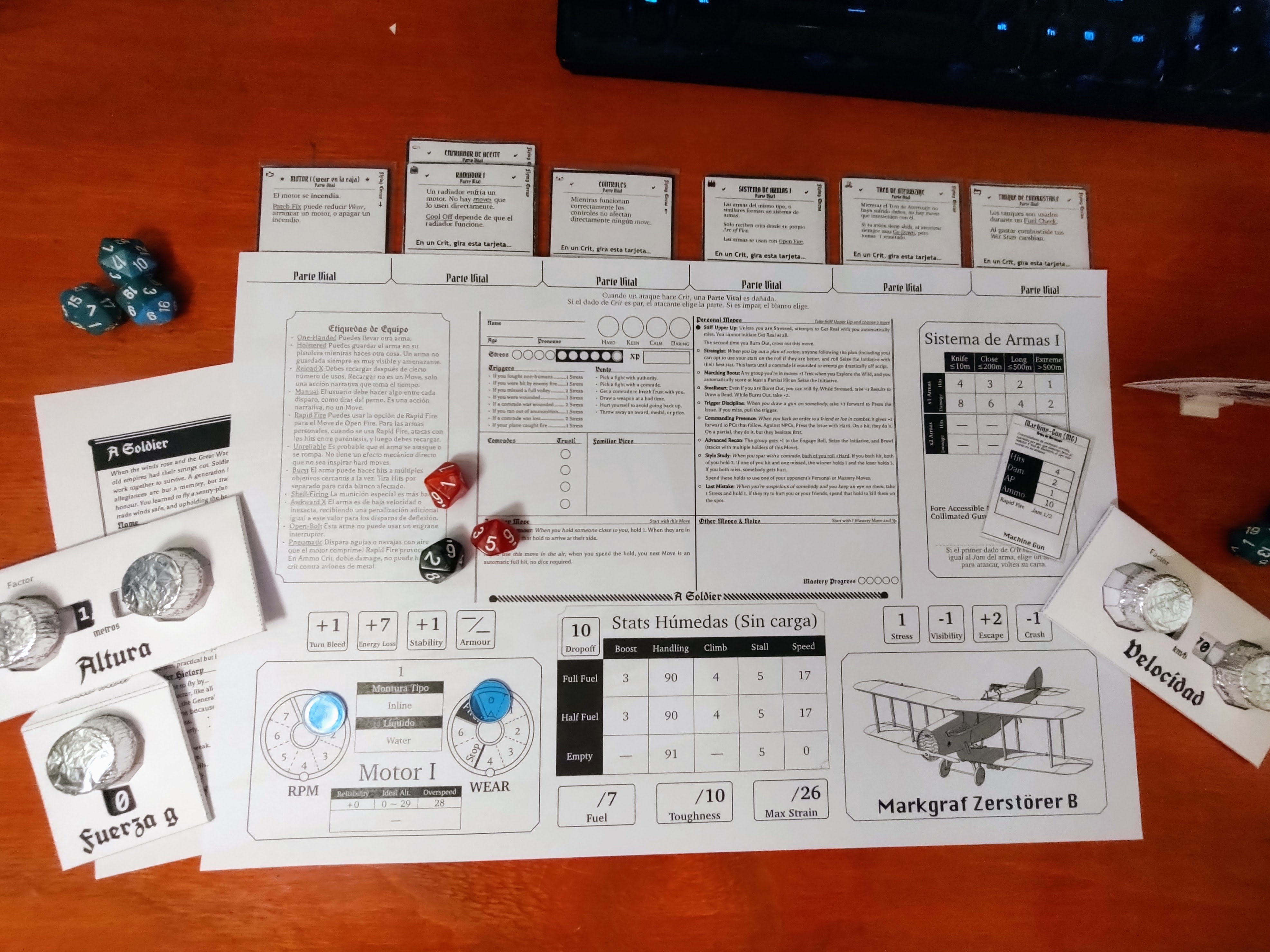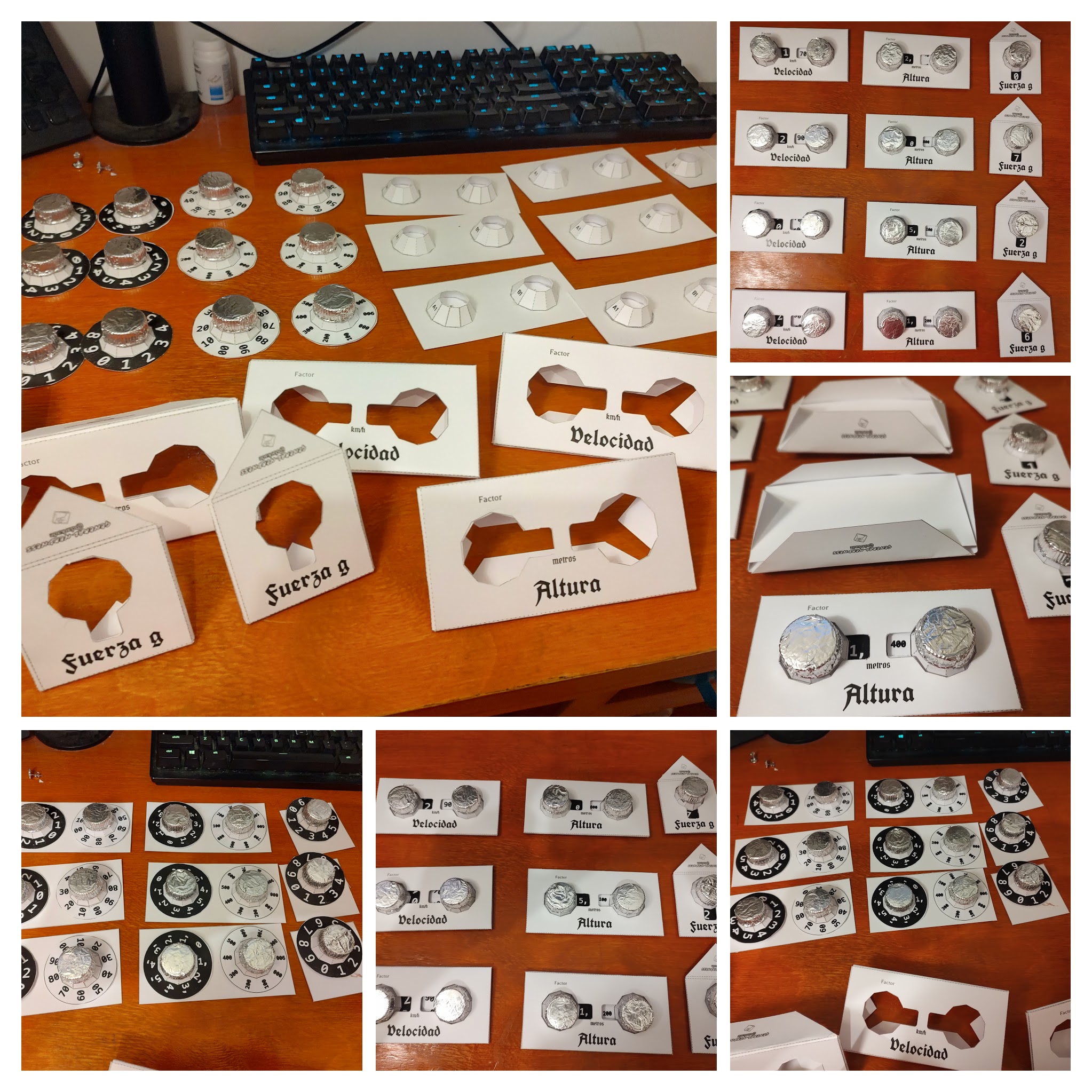Running Flying Circus as a convention game
May 30, 2023
This past weekend, after two months of preparation, I ran Flying Circus as a convention game. It was a 3.5-hour slot where I guided a group of strangers through a session, hoping to give them a taste of the overall game. While I was satisfied with the overall outcome, there were areas that could have been improved. This is what I did and what I will do next time I run Flying Circus.

La KoboldCon is a monthly even in Guadalajara, México, that’s aiming to create a regular space for the local, and not so local community. It was launched in November 2022 and has been steadily growing, expanding its activities with each passing month. The convention not only offers a variety of games, but also showcases projects from community members, including merchandise, playtests, and opportunities for gaming item exchanges.
 Welcome to la KoboldCon
Welcome to la KoboldCon
At this event, I had the opportunity to run Flying Circus. I’ve attended most of the previous events and having run other games on a few occasions, felt confident. However I knew there was stuff I needed to prep.
Prep
Some games are better suited for conventions, whether they are widely played or quick to pick up. But, being honest, Flying Circus is neither. It builds upon PbtA, but it finds its own way to introduce some more “trad” elements, It is too crunchy to be called a story game, but not quite what you’d call ‘tactical’ either.
I tried to bridge this in three ways: CATS, making my own components, and focusing the adventure itself as a teaching tool.
CATS
CATS stands for Concept, Aim Tone and Subject Matter. It’s a way to guide the conversation when introducing a game to the table. I won’t go into detail here, but you can check out P.R. O’leary’s blog for a thorough explanation. I will say using this tool has consistently led to some of the best games I’ve run. It helps set clear expectations, establishes the game’s tone, how the campaign or session has been set up, and ensures everyone is on the same page. It’s really cool!
 CATS for the game, in spanish
CATS for the game, in spanish
Components
New components were a necessity to me, without new components I simply wouldn’t have run Flying Circus. It is the kind of game that ask us to track a lot of things each one in different states. The included components sufficient if you are familiar with the game, but they involve a sizeable number of sheets, index cards, tokens and constant writing and erasing with little suggestion on how to manage this myriad of paper.
There’s also an implicit assumption that you’ll remember some of the more niche rules, or at least recognize when they come into play, like the three different ways radiators can work.
My solution? More paper! Well, sort of. Instead of using several sheets of letter-sized paper, I converted the default plane dashboard into a larger tabloid sheet. I also transformed the speed, altitude, and g-force indicators into dial counters, since they constantly change during gameplay.
 This is your player kit with the redesigned components
This is your player kit with the redesigned components
In addition, I created vital part cards that contain the individual rules for each of those components, wether they are functioning properly or not. Finally I made weapon cards. Trust me, if you play this game, you will forget to track jammed weapons. These cards serve as reminders, deferring the need to explain certain rules while providing quick reference when you do need to interact with them.
I also limited the playbooks and pre-choose the planes, so that we would customize the characters, rather than create them from scratch.
 Here’s some of the process for making the components.
Here’s some of the process for making the components.
You can see more images of the process here.
The Adventure
To frame the adventure, I presented it as a licensing exam. The characters were required to pull off a Power Dive, an Immelmann turn, a Slideslip, and keeping track of the practice targets in order to pass. This challenge applied to both the pilot characters and the players themselves. The goal was to engage with the mechanics by performing some exciting maneuvers. If they performed well enough, I had some bandits prepared to provide them with a taste of combat.
Afterward, the plan was to land and transition into the other part of the game, dealing with the stress the pilots had just gone through. Well, at least that was the plan.
The Execution
CATS and the components worked as expected, creating a high-energy and exciting atmosphere. However I ran into my first hurdle during character customization, and it exposed a gap in my skills that I was unable to overcome for the rest of the session. To understand, let me take a step back.
The game sign-up was opened about a week ahead of the event. I invited some people whom I had met at previous KoboldCons. They filled three out of four available seats. On the day the fourth one was taken by an 11-year-old kid with whom I had previously played, but not run, the Alien RPG.
I’ve found that playing with kids highlights the importance of genre understanding. For instance, when I played Alien with this kid, I realized that horror games require a significant buy-in from players because, unlike the characters, we have seen horror movies. We know it’s absurd to engage in such situations.
In the case of Flying Circus, the kid’s expectation was a session filled of violence, and the possibility to quickly become overpowered. However while Flying Circus can be extremely dangerous for the characters, it’s not solely about the danger itself, but the emotional struggle it entails. In a way their expectation was the dragon game, but with planes.
So this is the group: three adults and one 11yo. When I go through CATS and I have to repeat myself twice more for the kid. We create characters, and the kid keeps asking about doing stuff out of the bounds I’ve established for the session, so I keep reining them in. To me, this situation highlights how lacking my skills are when it comes to effectively communicating with children.
Running the game
As we begin the session, the pilots are only equipped with frangible bullets, because the session is intended to be an exam scenario. However the kid has chosen the Theler Zweihänder, that is, the one plane with a sword for a wing. And what do they do? They immediately go after the examiner. I pause the game, make it clear that we are not focusing on such actions, as doing so would be disruptive for the session, and result on consequences for the character. However I make it clear they’re free to do so if they wish – I won’t be the one to step on this child’s autonomy. They do it.
So I bring out the bandits. They have taken this distraction to attack the rest of the group. I shift my attention towards the bandit encounter, the characters capture the attacking plane by pulling off some daring jumps, using Ideomotor Response and by having one of the pilots draw the attention of the gunners, putting herself in great danger in the process.
Every now and then, I make an effort to check in with the kid. I just don’t have any tool on my skill-set to reintegrate them without their active participation with me and the other players. Surprisingly, they don’t seem upset either. While they may not always be in the spotlight, they seem to be enjoying themselves, taking fire and and taking shots whenever possible. But it isn’t ideal, I’m effectively ignoring the kid for long periods of time, which in turn means that I’m also neglecting the three other players who are fully engaged in the game and unable to play whenever the kid takes the focus.
I’m not upset, though I may feel a sense of frustration. More than anything, I realize that I’m investing time that I don’t have, and it’s becoming apparent that I won’t be able to proceed to the second part of the routine—the land phase.
We conclude the session with the pilots successfully landing their planes, having captured the bandits and their plane. They mark stress and I roughly explain what would happen now, but we don’t role play, we go straight into epilogues. Although everyone had a good time overall, I feel a sense of disappointment because I didn’t have the opportunity to highlight the aspect that was important to me—the personal interactions tied to the stress mechanic.
The adult players seem happy with how the session turned out, if a little frustrated themselves. But they are on high spirits and talk a couple minutes about their favorite moments while helping me clean up the table.
I want to emphasize that I don’t believe the kid was intentionally disruptive. Their behavior, while distracting and impacting the game flow, was a result of their age and tendency to get easily distracted. They were primarily focused on having their own fun, sometimes at the expense of others’ experience, but this wasn’t driven by the kid being intentionally disruptive.
The kid was fully capable to grasp the mechanics and engage with them once they payed attention. But had difficulty containing their excitement because they were, after all, barely a teen. On the other hand, if they had been an adult exhibiting the same behavior, I would have asked them to leave the table.
What to do next
I actually will run Flying Circus next week for at least three sessions. Some of la KoboldCon participants got really excited by my components and the concept of the game, and asked me to run the game for them. However, I will be implementing a few changes based on this experience.
First. Instead of starting with the mission part of the routine I will use the 13th age montage technique to frame the mission the characters just landed from. We’ll take corresponding stress and get into all of the land mechanics. I expect this to let me (a) gage how much the group understands about dogfights by listening how they describe the mission, and (b) give us opportunities for character development and style once they are on the air.
The second part of the session will involve a mission generated through the game’s mechanics, providing insight into the types of jobs that interest the players.
If I ran Flying Circus at a convention again, this is 100% how I would do it.
Second. I have to make my components more general purpose. The current version was explicitly developed with seven playbooks and seven particular planes in mind. If we create characters at the table I need the components to be compatible with all playbooks and planes. It will take a bit of work, but I’m 95% there.
Third. While my intention is not to specifically run games for children or teens, I understand that it is likely to happen again at similar events. I could choose to age-restrict my games as I did with Visigoths vs Mall Goths. That game focuses on teen characters and their romantic interactions, which I believed should be limited to interactions between adult players, me being an adult.
Flying Circus, on the other hand, deals with substances and explores mature themes, but in a way that allows us to fade to black when necessary. It’s more about exploring the underlying reasons behind the characters’ actions rather than explicitly depicting them. So I didn’t considered age restricting the session.
I’ll be looking for an First Order Optimal Strategy to engage with young people. There might be specific approaches or techniques I can implement to better handle situations like the one I encountered. Because I don’t plan to impose age restrictions solely to avoid running games where young people show up.
I can also think of a stronger reason to welcome children to my games if they express interest. The kind of games I run tend to attract women, queer people, and a lot of queer women like myself. That’s why I want to keep running these games, so that people like me feel welcomed, at these events. Children who want to participate in a diverse group, probably should be allowed to. They will see diversity as the norm, and how every background has a place in gaming.
Thank you for reading! If you would like to support me you could buy Arcane Moon my 5e adventure inspired by magical girl anime. You can also find me on Mastodon as @darkade@dice.camp. Or get Yonder! my free dice roller multi-game compatible for google sheets.
– Anya Reyes